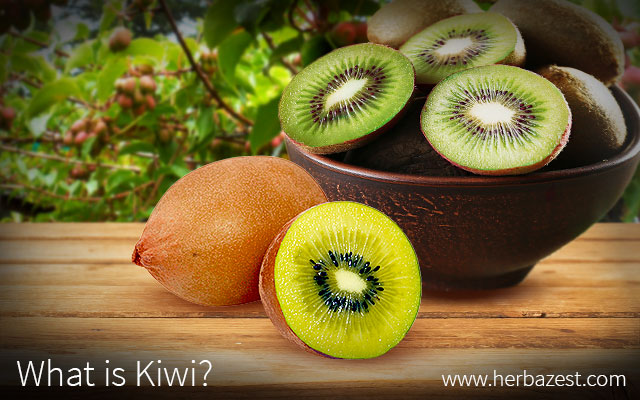Kiwi is a very popular fruit that was first grown in the northern regions of China over 300 years ago. Formerly identified as Chinese gooseberry, today it is mainly referred to using its common name, kiwi, which was given to it after New Zealand's national animal because of its similar, brown, furry exterior and oval shape.
Kiwi is most commonly associated with New Zealand, where kiwi seeds from China were introduced in 1906. Over the years, the country developed quite an impressive kiwi market, reaching 90% of the world production in 1971.
Is Kiwi a Fruit?
Despite its popularity, most people know very few details about kiwi. The first piece of kiwi information that is important to take into account is that, since it contains seeds, botanically speaking, kiwi is a fruit.
Because of its 1,400 seeds and the fact that it is formed through the pollination of a climbing vine plant, kiwi is classified as a berry fruit.
Kiwi scientific name is Actinidia deliciosa, and all the information about this fruit suggests it is native to Southeast Asia. There are many kiwi varieties, and the fruit shares characteristics with the other 55 species that also belong to the Actinidia genus, such as its climbing growth habit, radiating arrangement of styles in female flowers, and fruit structure.
Kiwi Description
The kiwi fruit grows on a woody and twining vine that can reach 33 - 66 feet (10 - 20 m) in height. The kiwi plant grows fragrant flowers one to two inches (2.5 - 5 cm) wide, which are born either alone or in groups of three from the base of the leaves, with five to six white petals that change into light yellow. The large, oval leaves on the vine are coated with red hairs when young, and become hairless and dark-green when they mature.
The kiwi fruit, oval shaped, grows up to two and a half inches (6.4 cm) long and has a vibrant green, juicy inside filled with up to 1,400 seeds. On the outside, the kiwi fruit is protected by thin, brown, hairy skin.
Kiwi Cultivars
Since it started to be cultivated, a considerable amount of agricultural research has been done on kiwifruit. So far, 20 cultivated varieties of Actinidia deliciosa have been established. The four main classes of Chinese kiwi fruit are:
- Zhong Hua. Also known as Chinese gooseberry, this variety has a round to oval shape and is the most commonly grown.
- Jing Li. This is the northern pear gooseberry, which can be identified by its hairless leaves and elongated oval shape.
- Ruan Zao. Commonly called soft date gooseberry, this variety is known for being very sweet and is often used for jam.
- Mao Hua. This cultivar is broad and thick, with green, sweet flesh and an elongated oval shape.
The most well-known variety and the preferred cultivar in New Zealand is 'Hayward'. Hayward fruit is very big, with an oval shape, somewhat flattened sides, and greenish-brown skin with silky hairs. This variety of kiwifruit is known for its long shelf life and superior flavor.
The original Chinese gooseberry has come a long way since its seeds were first introduced into other countries, especially New Zealand. Its most commonly-used name has changed to kiwi, and the fruit has experienced a sharp spike in popularity. Years of investigation trying to understand what a kiwi is botanically, and learning about kiwi's most desirable characteristics as well as extensive work gathering information on kiwi's ability to adapt to different climates, have been translated into the existence of multiple cultivated varieties, but one thing that stays consistent is that kiwi is a fruit in popular demand with major importance to New Zealand.
Sources
- Fruits of Warm Climates, Kiwifruit: Actinidia deliciosa
- Kiwifruit: Actinidia deliciosa
- New tempered fruits, Actinidia chinensis and Actinidia deliciosa
- Oregon State University, Growing Kiwifruit
- Te Ara - The Encyclopedia of New Zealand, Story: Kiwifruit
- Advances in Food and Nutrition Research, Nutritional Benefits of Kiwifruit, 2013




